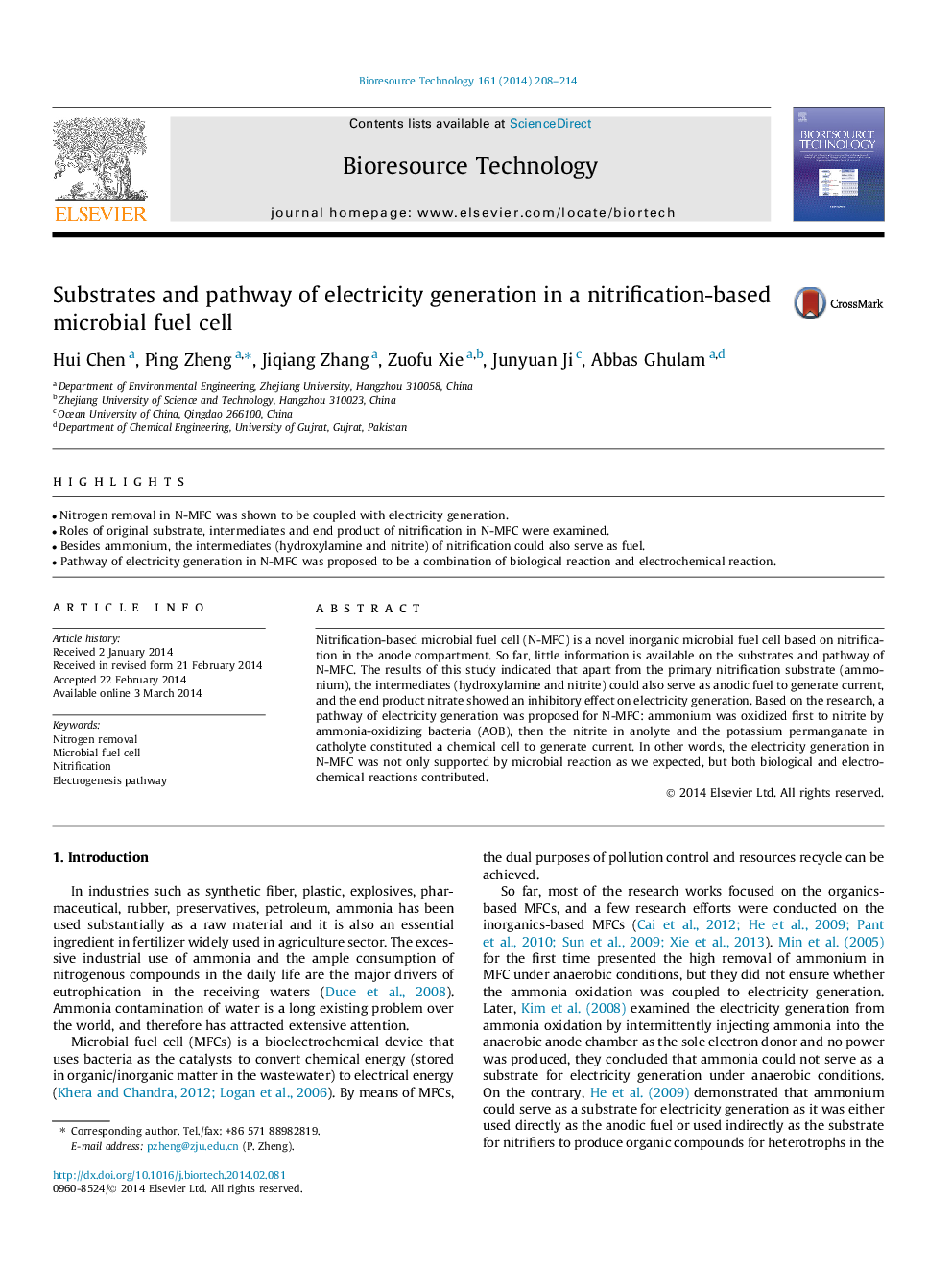| Article ID | Journal | Published Year | Pages | File Type |
|---|---|---|---|---|
| 7078451 | Bioresource Technology | 2014 | 7 Pages |
Abstract
Nitrification-based microbial fuel cell (N-MFC) is a novel inorganic microbial fuel cell based on nitrification in the anode compartment. So far, little information is available on the substrates and pathway of N-MFC. The results of this study indicated that apart from the primary nitrification substrate (ammonium), the intermediates (hydroxylamine and nitrite) could also serve as anodic fuel to generate current, and the end product nitrate showed an inhibitory effect on electricity generation. Based on the research, a pathway of electricity generation was proposed for N-MFC: ammonium was oxidized first to nitrite by ammonia-oxidizing bacteria (AOB), then the nitrite in anolyte and the potassium permanganate in catholyte constituted a chemical cell to generate current. In other words, the electricity generation in N-MFC was not only supported by microbial reaction as we expected, but both biological and electrochemical reactions contributed.
Related Topics
Physical Sciences and Engineering
Chemical Engineering
Process Chemistry and Technology
Authors
Hui Chen, Ping Zheng, Jiqiang Zhang, Zuofu Xie, Junyuan Ji, Abbas Ghulam,
